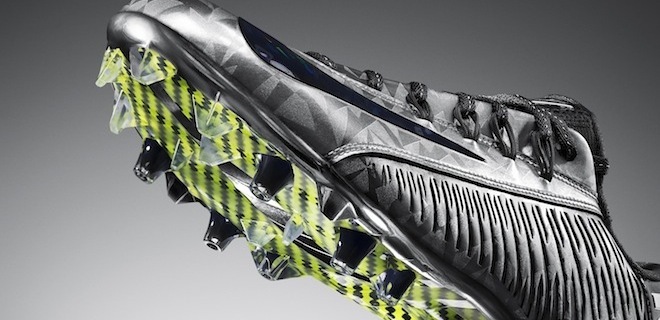Nike 3D Prints Super Bowl Cleat

With the NFL playoffs drawing to a close, the four final teams are willing to do whatever it takes to defeat their opponent and make it to the Super Bowl. While the players on these teams are some of the best athletes in the world, at some point they must look outside their natural ability and find other means that will increase their odds of winning. At Nike, they believe that the right pair of 3D printed cleats could give players that extra push that they’re looking for.
The Vapor Laser Talon, released last February, was the first 3D printed cleat that Nike created for football players. The cleats were built with specialized studs that not only increased traction but a player’s speed as well.
However, the Vapor Laser Talon’s were designed with a flaw. They only improved speed if a player was moving straight ahead. Anyone with knowledge of the sport knows that football players at different positions have different requirements. While many offensive players, like running backs or wide receivers, mainly move forward, several defensive positions, defensive backs or linebackers for example, must be able to move backwards and side to side as quickly as possible.
Nike, wanting to 3D print a shoe that was suitable for all positions, came up with the idea for the Vapor Carbon Elite. Similar to the Talon, the Elite also focuses on speed but does so by preventing microsecond slippage. This slippage, usually occurring during a player’s first few steps, is critical to a football player because it affects his power and speed.
Shane Kohatsu, head of innovation at Nike, helped to design the new shoe and believes that a little slip could be a big deal. “It’s also a big opportunity,” he says. “This was our big aha moment.”
To alleviate the problem of slippage, the Vapor Carbon Elite utilizes tri-star studs that not only increase initial linear propulsion but lateral motion and backpedaling as well. While it might sound odd, Nike was actually inspired by the shovel. With its triangular shape and curved surface, it was perfect for a cleat that needed to dig into the ground and stay there.
Incredibly, the cleat was created in only six months. “Something like this would’ve normally taken us two to three years at least,” says Kohatsu.
“The learning that we get from this will continue forward into other innovations,” says Ken Link, the director of design for football at Nike. “Were already working on things for the next year and next year and next year.”











